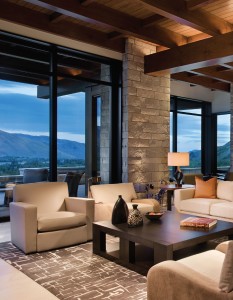 The incandescent light bulb, à la Thomas Edison—for a long time—exemplified the idea, “If it’s not broken, don’t fix it.” But there has long been a crack in incandescent technology and that crack is inefficiency. And just like Leonard Cohen suggests, a crack like that will let the light (read: innovation) in. The need for alternatives has changed the way lighting designers and professionals approach their craft.
The incandescent light bulb, à la Thomas Edison—for a long time—exemplified the idea, “If it’s not broken, don’t fix it.” But there has long been a crack in incandescent technology and that crack is inefficiency. And just like Leonard Cohen suggests, a crack like that will let the light (read: innovation) in. The need for alternatives has changed the way lighting designers and professionals approach their craft.
LED LIGHTING HAS, OF COURSE, ROCKED ALL OUR WORLDS THESE PAST FEW YEARS.–Glenn Johnson, Adaptive Lighting
The incandescent bulbs that we all grew up with have very short life spans and much of the energy the bulb consumes to light the room is lost as heat. In a world where we need to pay more and more attention to our energy usage, any improvements in the way we light our world are of note to home and business owners.
Attempts to improve or move away from the incandescent bulb through the years have offered options, but none—until recently—gave reason enough to inspire mass migration to the new product. Alternatives to the incandescent such as the traditional and the compact fluorescent light (CFL) are not perfect replacements. Most often used in commercial spaces, fluorescent bulbs have not received the warmest of welcomes in the home. Many homeowners find the light too cold or notice a buzz or flicker generated by the bulb.
THIS SPREAD This interior by Adaptive Design Group & McLaughlin & Associates Architects exemplifies the ADAPTIVE® Method for lighting a room, layering various “levels” of lighting, including architectural, decorative, art, and interior decoration. PHOTO Roger Wade Studio, Inc.
“There is a crack in everything.That’s how the light gets in.”–Leonard Cohen
Recent years have seen the emergence of another lighting technology—the LED light or light emitting diode. LED technology has actually been around since the 1950s, but the adoption of LED lighting has been slow because of the initial costs involved. Another reason consumers were slow to use the LED—we’re conditioned to think in terms of wattage and we were born and raised on the incandescent 60- or 100-watt light. Lighting designers and specialists today say that to understand LED lighting, you have to switch your thinking from wattage to lumens, the measure of luminous flux or the amount of visible light emitted by a lighting product. And you have to up your expectations. LED lights use 80 percent less energy and last 20 times longer. With more research and development in LED lighting and with the consumer world warming up to using LED lighting on a larger scale, the pricing issues have all but dissipated. LEDs were initially expensive because they were new and the cost of innovation was tacked onto the price tag. Today, quality LEDs are affordable, available, and rapidly becoming the light of choice.
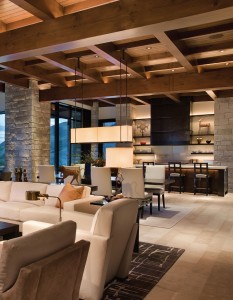 Salt Lake City-based Glenn Johnson has literally written the book on residential lighting. Residential Lighting Design, published by McGraw-Hill in 1999, includes Johnson’s insights on the art of lighting. Born into the lighting world, Johnson learned at the knee of his father who developed the Merlin Light®, a leading illumination system for the country’s finest art collections. Founder of Adaptive Design Group, Johnson has added his own innovations to the lighting world, developing and trademarking The ADAPTIVE Method®, a process of layering lighting that has been embraced by lighting designers, architects, and discriminating homeowners nationwide. Adaptive Design Group, Inc. provides world-class architectural lighting design, lighting controls, and electronic systems engineering for custom home and resort properties.
Salt Lake City-based Glenn Johnson has literally written the book on residential lighting. Residential Lighting Design, published by McGraw-Hill in 1999, includes Johnson’s insights on the art of lighting. Born into the lighting world, Johnson learned at the knee of his father who developed the Merlin Light®, a leading illumination system for the country’s finest art collections. Founder of Adaptive Design Group, Johnson has added his own innovations to the lighting world, developing and trademarking The ADAPTIVE Method®, a process of layering lighting that has been embraced by lighting designers, architects, and discriminating homeowners nationwide. Adaptive Design Group, Inc. provides world-class architectural lighting design, lighting controls, and electronic systems engineering for custom home and resort properties.
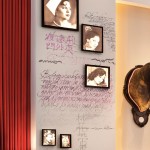
According to Johnson, “The ADAPTIVE Method® articulates eight layers of lighting that can (and should) be applied to the built environment.” Johnson posits that each layer—Architectural, Decorative, Art, Path, Task, Interior Decoration, View, and Exterior—can be thoughtfully combined to create the best impact. Think about your favorite residences, your favorite interiors, and you’re sure to see these eight layers at work.
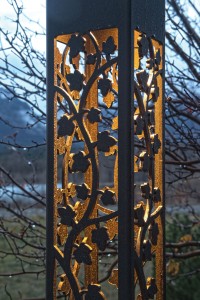
Johnson says you cannot overstate the impact that LED technology has had on lighting design. “LED lighting has, of course, rocked all of our worlds these past few years. But I shied away from specifying ‘point-source’ LED lamps until the first of this year. 25- to 40,000-hour lamp life is wonderful, but those original LED lamps were not the best quality of light. LED is now ready and can be dimmed successfully under certain conditions. By far, LED lighting and its controlling technologies (drivers and dimmers) have been the most significant paradigm shift in my 35-year career in lighting.”
Brad Reedstrom of Bigfork Builders in Bigfork, Montana, agrees. “The advances in lighting technology have made leaps and bounds in recent years,” he says. “The current generation of LED technology allows us to provide lighting aesthetics equivalent to the old incandescent fixtures, but these lights use only one-tenth the amount of electricity.” Not only has the technology of the bulbs advanced, but so have the controls and systems we use to light our homes.
“WITH THE WIDE RANGE OF RECESSED CANS, ART LIGHTING, SCONCES, LANDSCAPE FIXTURES, AND DECORATIVE FIXTURES, CLIENTS OR THEIR DESIGNERS CAN REALLY CREATE SPECTACULARLY LIGHTED RESIDENCES WHILE KEEPING ENERGY EFFICIENCIES TO A MAXIMUM.” –Russ Vukonich, Eyehear Technology Group
Russ Vukonich of Eyehear Technology Group in Kalispell, Montana, is fluent in the current technology and the products available. The options, for homeowners of any budget, are wide and varied. He says, “With the wide range of recessed cans, art lighting, sconces, landscape fixtures, and decorative fixtures, clients or their designers can really create spectacularly lighted residences while keeping energy efficiencies to a maximum.” But, he says, lighting is only one half of the equation. “The second part of this element is incorporating motorized shading into the same system to provide UV light protection to interiors and energy savings while maximizing the view shed. Motorized shading is becoming a highly desired aspect in the mountain modern home with lots of glass.”
Many clients initially worry about the up-front costs of going with a computer-controlled, state-of-the-art system, but Reedstrom says it pays off quickly—yes through added efficiencies in the home—but also through convenience and the benefit of creating an improved living experience. He says, “The up-front investment in a computer-controlled lighting system is really the core of complete home automation, providing integrated control and savings in heating and security as well as lighting. The added convenience of being able to access the home system from a remote location is very attractive to many homeowners as well.”
IMAGILUX PANELS ARE MOST OFTEN USED TO BACKLIGHT ONYX OR OTHER TRANSLUCENT STONE, GLASS TILES, ARCHITECTURAL RESIN, OR GLASS.
–John Darland, ImagiLux
LED PANELS
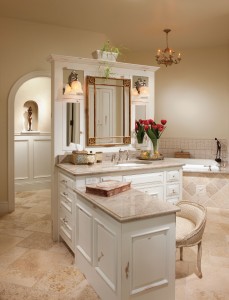
An LED-lighting design and manufacturing company with a nine-year history in LED and fiber-optic lighting, Eugene, Oregon’s ImagiLux specializes in LED-lit decorative panels that are very much in demand. According to John Darland, founder of ImagiLux, the commercial world was quick to catch on to the advantages of these decorative panels. From backlit commercial displays to stained glass panels and backlit panels for fine art, ImagiLux can customize LED panels to any specification. High-end bus and elevator car manufacturers, wine cellar designers, and more and more residential architects and interior designers are using ImagiLux’s services. Darland says, “Companies integrate our panels into exclusive designs that make the most of a small space. The list goes on, and residential applications are the next front that is opening up—particularly with backlit onyx in kitchens and bathrooms. We can’t wait to see what kind of projects are coming up in 2016.”
In the residential world, according to Darland, “ImagiLux panels are most often used to backlight onyx or other translucent stone, glass tiles, architectural resin, or glass. We’ve designed panels for countertops, islands, backsplashes, walls, fireplace surrounds, and floor tiles.” And homeowners are seeing these panels as another avenue to make a mark on their homes. Darland (and his team at ImagiLux) is prepared to walk anyone through the process, no matter their level of familiarity with the technology and the possibilities. The ImagiLux team specializes in helping clients understand the options and the steps to creating a final product that is unique to their home and reflective of how they live and who they are.
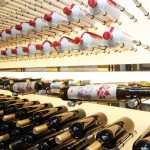
For everyday lighting, Rocky Mountain Hardware, an Idaho-based company specializing in hardware, plumbing, and lighting fixtures, approaches all of their designs through the lens of utility and beauty—a winning combination. For their lighting line, certainly the first priority is function—lighting a room. But the designs they offer are artistic, stylish, and versatile. From sconces to custom fixtures, RMH’s designs not only complement the interiors, they shine.
The versatility of the RMH collections is key, says Christian Nickum of Rocky Mountain Hardware. “When we design new products, we want to make sure that our designs work with a variety of interior styles. We also work with interior designers to create custom creations specific to the needs of particular clients.”
Designers and lighting professionals are adept at harnessing the ever-improving lighting technologies to make an impact in the commercial and residential worlds. As Darland says, “Creative, thoughtful lighting can make an ordinary space extraordinary.”
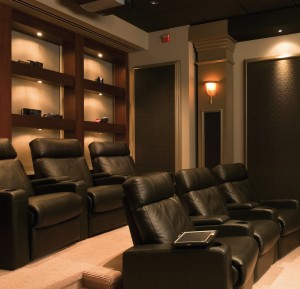
Designers, builders, architects, and savvy homeowners agree, the right lighting design and technology can change the way you live in your home. And it’s a good investment. Reedstrom says, “Lighting enhances the bottom line of every household. Lighting design and automated control provides a huge value-added aspect to daily living and a great return on investment. Resale values dramatically increase with lighting as it is the design element that truly brings the building’s architecture and interior design to life. If we put the same home on the market, with and without lighting design, the value of the well-lit home skyrockets.”
